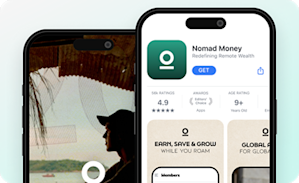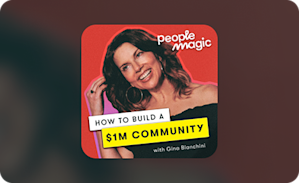Online Courses
The Ultimate Guide to Creating an Online Course
Wondering how to create an online course with staying power? This ultimate guide will show you everything you need to know.
Author
Mighty Team
Last Updated
August 14, 2025

By 2027, the online course business is projected to be worth $65.17 billion.
That's an incredible number. But it's not just a statistic. We've watched course creators change their lives as they create 6- and 7-figure courses. We've seen...
The podcaster who sold 5,000 seats to a $997 course in 10 days.
The community that launched a 13-week add-on course and saw $100k in new revenue within 2 months.
The personal finance community that generated $130K in five days with their latest course.
The results are amazing. And they prove that courses are STILL transforming lives--both for students and teachers.
This guide will show you how to create an online course, from ideation to execution.
We'll show you:
The 6 secrets to successfully create online courses.
Why some online courses fail.
The 8 steps you can take to create an online course that not only SELLS, but that TRANSFORMS lives.
If you want more support in building your online course and community, come join OUR Mighty Community for free and meet other new and established community owners! We’d love to meet you. Join for free!
What is an online course?
An online course is structured education delivered over the internet, usually via a learning management system (LMS). Most online courses use multimedia content to promote remote learning, often with assessment or certifications built in.
It might seem odd that we need a definition, but the truth is, online courses are constantly evolving as new tech creates new ways to teach and learn.
Is an educational livestream an online course?
Is a YouTube tutorial an online course?
Is a learning community an online course?
The answer could probably be, yes!

Why create an online course?
Here are some common reasons to create an online course:
To share your expertise, experience, or passion with the world. Maybe you have an email list or a social following. Maybe not. But either way, creating an online course is a fantastic outlet for bringing people together to master something interesting.
To make money. Courses are an awesome digital product. Whether you're looking for a side hustle or an e-learning business, you can create content so valuable, you can charge for it.
To repackage and/or monetize content you’ve already produced. If you've got webinars, ebooks, or recordings of live teaching, an online course can monetize something you've already produced.
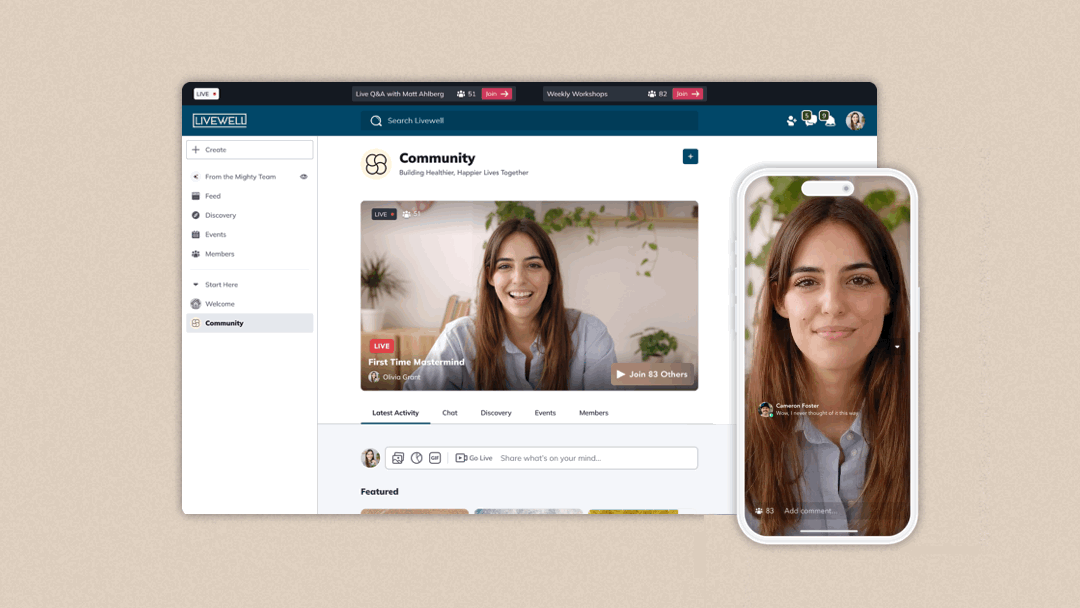
To host a community of learners: Live and community-powered courses let members form meaningful connections and learn in a group--even building a community that runs itself.
To generate more energy, joy, creativity, and passionate interactions in your own life: The creativity and fun of a course can be life-changing for a creator. And watching people achieve their goals is an amazing rush.
Build your brand & authority: Creating a course with what you know is a great way to build your personal brand and grow your authority.
These are just a few of the reasons why you might create online courses. So no let's talk about how to do it!
Secrets of a successful online course
In this article, we’ll talk through a lot of things that make a course work. So let’s start with some of the most important components.
Research
Every great online course begins with a teacher who knows what their members want and need. But so many course creators start in their head and stay in their head. They think, “Hey, I’m going to create a course on X!”
And they do.
But they never validate the idea. They don’t find ideal members and see if it’s something they actually want. They don’t do interviews of potential students.
They guess, throw a dart, and hope it hits a target.
Every great course begins with research, ideally with talking to potential students. We’ll show you how to do this below.
Clear value proposition
The research should lead to a clear value proposition for the potential member. They should know exactly what they’re going to get out of the course and, therefore, why they should pay to take it.
Transformation not information
It’s been said that people don’t pay for information, they pay for transformation. Nobody takes an online course because they want to take an online course.
They want some transformation.
Never get so fixated on your online course that you believe that it’s the thing people want. It’s not. It’s the vehicle for the thing people actually want: a transformation.
Great online courses take students on a journey of transformation.
A great platform
A really good course can still survive on a platform that’s not great, but a really great course platform will make your course sing, help your members connect and engage with you and each other, and it will ultimately create the success you’re looking for.

The right price
A great online course usually finds a good price balance in price. “The right price” here doesn’t mean “a low price.” On the contrary, your price should be high enough that members value your course, but not so high they can’t afford it.
We’ll talk more about pricing below.
A great marketing strategy
If a great course lands on the internet and nobody is around to hear it, does it make a sound?
Too many courses have been released into the wild with no results. Their teachers worked so hard to bring their vision to life, and nobody comes.
That’s why marketing is as important as creating the course itself. Although the word “marketing” sounds a bit intimidating, it doesn’t have to be.
We’ll talk about this below.

What makes an online course fail?
Too much information and not enough transformation: Resist the urge to throw everything you know at your audience and give them what they NEED.
No clear value proposition: “Digital marketing course” is a fuzzy value proposition. “How to double your coaching clients with Facebook ads” is a clear value proposition. Make sure your course has one.
Poor focus: Who is your course for? If your answer is “everyone,” you’re in danger of a course that fails. Get clear on who your ideal member is and what you’ll give them.
No marketing: You don’t need a million-dollar marketing budget, but you do need a strategy for how to share your course with the world.
Terrible platform: Your platform can't be working against you, killing UX and frustrating your members.
How to create an online course
The best way to create an online course is to build a journey for your course members to master something interesting, together.
To take this approach to creating engaging online courses, we'll start with three things:
A compelling topic.
Your Ideal Member.
Your story or the reason why you are the right person to create this online course.
These three are the essential parts you need to build an online course.
Below, we’ll talk more about these points, and go through how to create an online course step by step.
1. Start with a compelling topic
Choosing a compelling topic is the first, essential step to create online course materials.
You might already have an idea or at the very least a course niche, but we'll walk you through some exercises to identify and refine your course idea.
When building online courses, here are three not-so-obvious questions that can help you pick a compelling one:
What life experience have you gone through that you could take others through?
Ryder Carroll struggled with A.D.D. until he found an amazing note-taking method that worked to organize his life: bullet journaling. He built courses and community around teaching others the art of bullet journaling.

This is the power of your story and experience in an online course. Ryder's teaching comes from a powerful Big Purpose mixed with a practical skill his members love.
What's in your background or experience that helps you prepare to teach a course? For inspiration, consider your:
circumstances
identity
cultural background
where you’ve been and why
what you’ve achieved and how
who and what you’ve taken a stand for
who you’ve helped along the way.
You might be surprised, but there’s almost always something in our personal backgrounds that we can share with others.
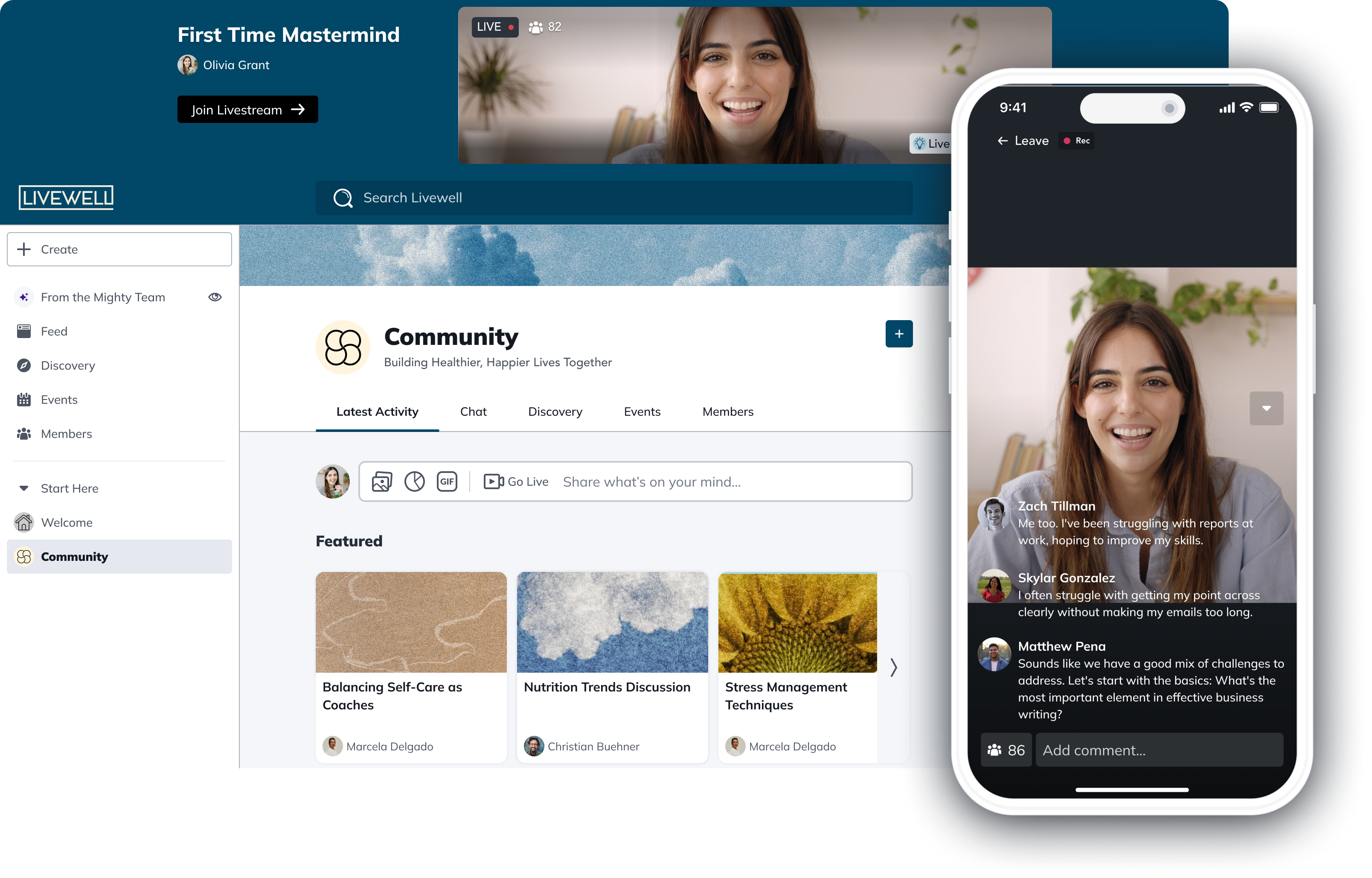
What’s an area you’re curious about or studying today?
When you're ready to create online courses, there's nothing like your own passion or learning to fuel you.
And it can be perspective-changing to stop focusing on what you know "everything" about to planning a course you know quite a bit about but you're excited to learn more.
That’s right. You don’t need to be an expert to create a course that sells.
There’s no reason you can’t be a guide, sharing your own learning in real-time as you go. This live coaching model is a powerful and effective method of online course content creation.
It will take time to grow a thriving course business. You'll do better if it comes from your place of joy.
Ask yourself:
What do you find yourself talking about whenever you get a chance?
What do the people you love think you're passionate about?
What things are you often trusted with at work?
You can also try our free course name generator! It will help you find the right one.
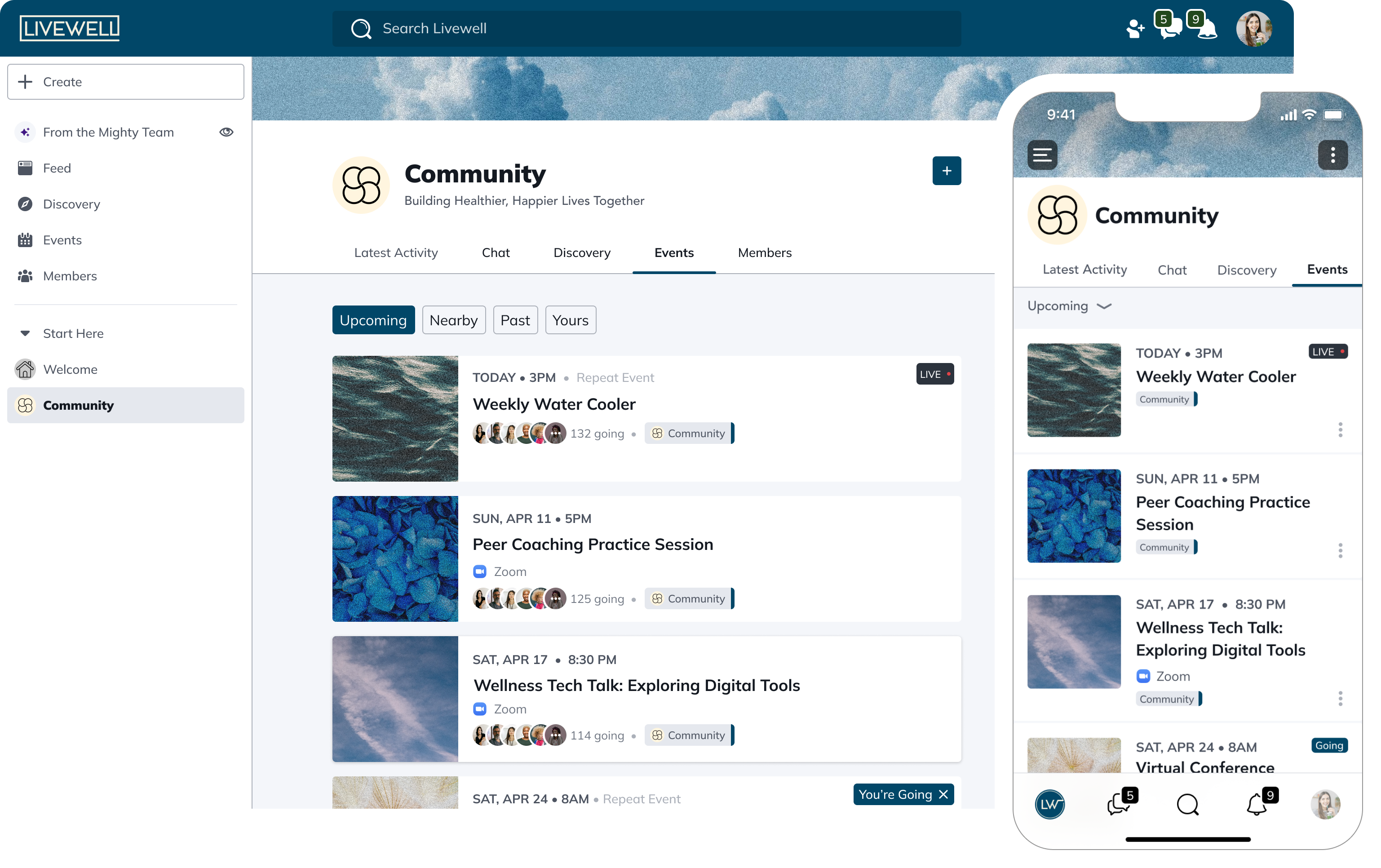
What’s something you’ve recently mastered you could help others with?
Would you believe that being a newbie to something could be the superpower that helps you create an online course?
Yup. Being new can be your competitive edge.
Here's why.
This example can help explain. Let’s say you’re one year into a new career in finance right out of college. Sure, there are plenty of people with more experience who could create an online training course around succeeding in a finance career. But nobody is as qualified as you to understand what they're going through.
Often people who have recently learned something are better positioned to teach it than experts--because they remember what it's like to learn.
When you take any of these three not-so-obvious approaches to finding your topic, you give yourself the best opportunity possible to get specific and be authentic. And the more specific and authentic your topic is, the easier it will be to check off the next two steps of creating awesome online courses.
But if you're still stuck, we've compiled a list of 168 online course ideas. You should definitely check that out, but here are a few quick ideas for popular course niches.
2. Find your Ideal Member
When planning how to create an online course, there's a secret truth that will BLOW YOUR MIND.
Ready?
You don't want EVERYONE to buy it.

Seriously. You don't.
An online instructor who thinks it's for EVERYONE has some work to do.
You need an Ideal Student. Or--as we prefer to say--an Ideal Member.
The most valuable online courses are those that deliver results and transformation for their students.
Think about results or transformation as taking someone from “point A” to “point B” in pursuit of a lifestyle shift, a career move, an interest, a passion, or a goal.
People are motivated by transformation and they are willing to pay for it when it comes in the form of an online course.
Your Ideal Member is the person who most needs your online course the most.
They are motivated by what the topic will help them achieve and the way that your story makes it feel accessible and doable for them to achieve it.
The more specific you are with defining your ideal member when you create an online training course, the better. Because that specificity sets them up for success.
Be clear about your ideal member’s demographics, cultural background, identity, circumstances, where they’ve been and why, what they want to achieve, and what’s gotten in their way.
Do your research to find your ideal member!
Want the best secret to find your Ideal Member? Talk to them!
Set up anywhere from 10-30 quick chats with potential course members. Get clear on what their pain points are, and listen for their needs and hopes from a course.
Here are some questions you can ask:
What are you struggling with in X that you’d like to learn?
What do you wish you could be doing with X in a year?
How valuable would it be to you to learn X?
We have a free training on finding your Ideal Member in our Mighty Community!
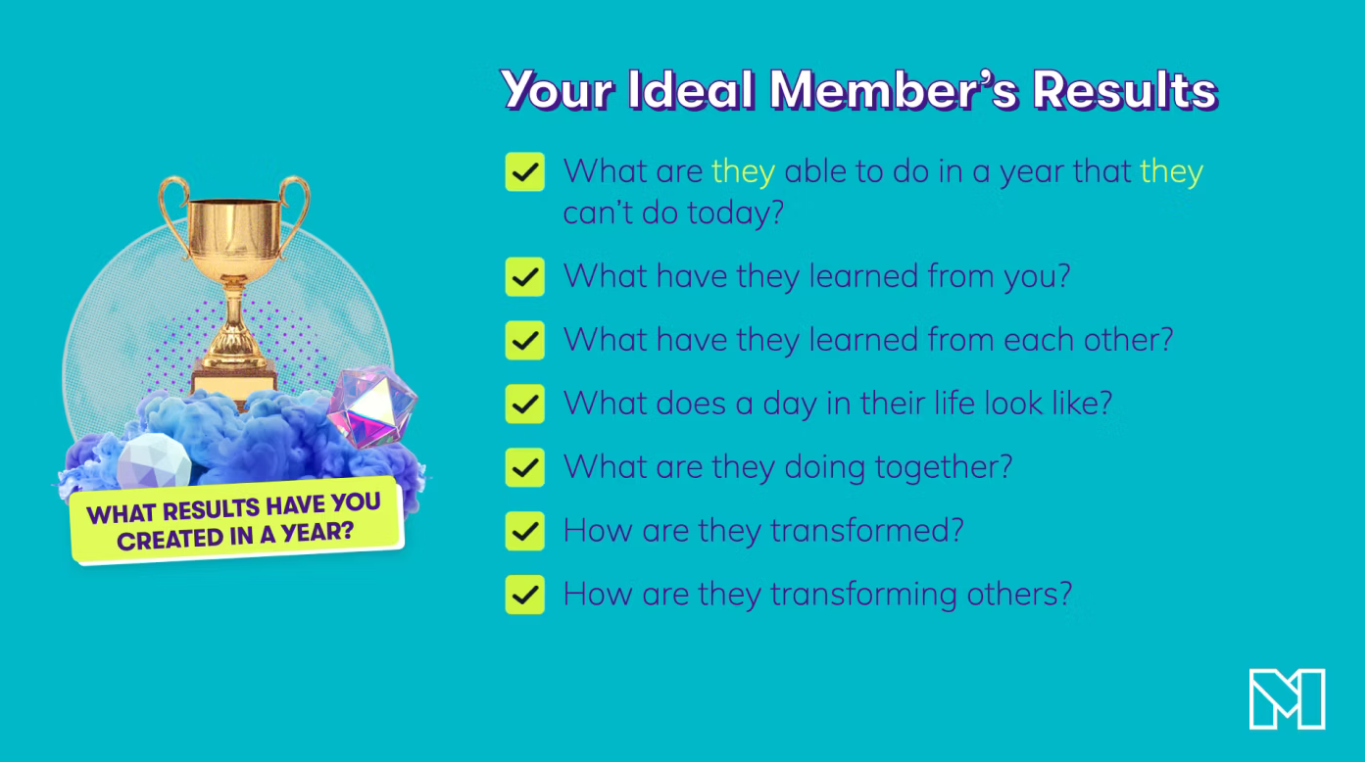
3. Tell your story
The final step is to ground this in your story.
Why are you the right person to create an online course about this topic?
Like we said, you don't need to be an expert to teach an online course. You don’t need to have a fancy degree, a huge following, or online accolades to be the right instructor or mentor for your topic.
You are an expert on your background and lived experiences.
It’s your journey that makes you the right instructor or mentor for this topic and your ideal member.
That’s more powerful than any highly produced video or snazzy website. It’s the difference between creating an online course that thrives and grows and one that falls flat on its face.
Case Study: Slow AF Run Club
For one of the COOLEST examples of a brand rooted in a powerful story, check out the story of Martinus Evans. Martinus founded the Slow AF Run Club for "back of the pack" runners. It's a movement 20,000+ strong, and it all started with Martinus being brave enough to share his story.

4. Gather your gear
The next step to create online courses is to gather your gear. So let's talk about some options with 2 awesome YouTube Tutorials from the Mighty YouTube Channel.
And if you don't have gear, don't sweat it. Here's how to do an awesome course set-up on any budget.
Video setup
If you have access to professional video gear--or you're planning to get some--that’s cool. You can follow the tutorial above for some great set-up guidance.
Course video setup on a budget
If you don't have professional gear, that's okay. Any modern smartphone or webcam probably has a camera that’s HD and more than powerful enough to build a great online course.
Here's a simple pro tip.
The trick to great video isn’t gear–it’s lighting. And one of the simple tricks to get great lighting on a budget is to set up in front of a window with the light on your face. Take a quick look to make sure your background is clean. You’re good to go.
One more reminder, if you have a slide show and your video feed will be appearing as a small box on the corner of it, make sure your face is close enough to the camera to be seen.
Sound setup
There’s a famous saying among YouTubers: People will watch a terrible video with good sound, but they won’t watch a great video with terrible sound. That’s why sound is probably more important than the video itself. (If you’ve ever tried to watch a lecture with a scratchy audio feed, you know what we mean.)
It’s here that sitting 3 feet away from your laptop as you record your online course probably won’t cut it. You’ll get that scratchy sound nobody wants to listen to.
You might have a headset with an existing mic that does a good job (e.g. airbuds or bluetooth headphones). Test what you have to see if you can get a good quality recording on playback.
If not, it might be worth investing in a lapel mic or desktop condenser. They aren’t expensive, and will make a huge difference to the quality of your course.
Pro tip: If you’re delivering your course over Zoom or some other streaming platform, capture a backup via a desktop audio recorder. This means that even if you have feedback or connection issues, you’ll still have a good quality recording you can match to the video after.
5. Choose your platform
If you're going to create an online course, obviously you'll need course creation software.
At a minumum, a course platform needs elearning authoring to build the course itself. Then it needs an LMS to manage learning and help you create a course business.
Here are the basic features a course platform NEEDS:
Content options
Flexible course content options (video, audio, text, images, etc.)
Content organization tools (inc. dripping content)
Assessment tools
Member management
Create course pricing, bundles, etc.
Sales, checkout tools, and different currency options
Member profiles and analytics
But just having these doesn't mean you've found an amazing course platform. The best platforms also have...
Engagement
Member messaging, chat, and profiles
Community options like discussion forums, posts, long-form content
Livestreaming, virtual events, tools for live teaching
Branding & Access
Course customization options
Light & dark mode
Native apps for iOS and Android
Branded course apps (under YOUR brand in the App Store and Google Play Store)
Marketing & selling
Build landing & sales pages
Create offers and discounts
Sell add-ons like memberships, premium groups, events, etc.
Connect email
Each of these features has a purpose, and finding a platform with all of them gives you tremendous power for course-building. And even if you don't want all the features today, they're nice to have as you grow.
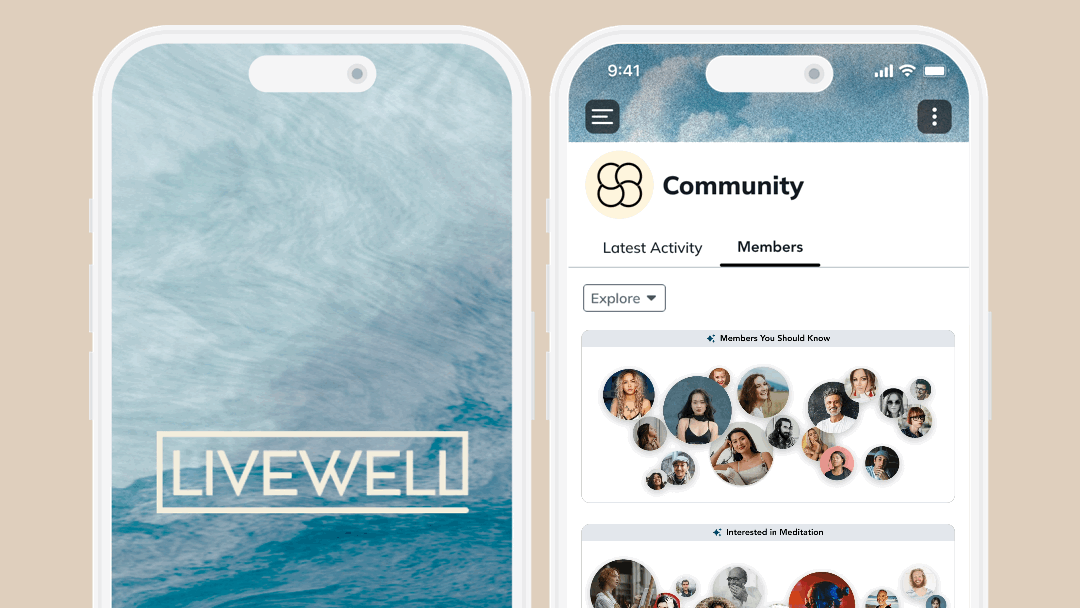
Choose an "all-in-one" course platform
Whatever you do, choose an "all-in-one" platform to build an online course. Seriously.
There are some good options out there, and there's no point in using 5 different pieces of software to run your course when you could use one.
This will let you bring online courses, course community, and payments together in one place – ensuring your students grow quickly and you can charge more money for your online courses, generating more income as people get results from your online courses faster.
Choosing live or pre-recorded
Once upon a time, you could only really teach a pre-recorded course online. But with livestreaming technology going mainstream, it's now possible to teach live too--we call this a cohort course.
In technical speak, this is a question of an asynchronous vs a synchronous course.
asynchronous = learning NOT done in real time
synchronous =learning done in real time
We do really love synchronous courses. There's a magic when you can bring learners together and let them feed off each other's energy.
But when deciding which of these to choose, it really comes down to your audience.
Live instruction requires members that can show up and learn together.
Pre-recorded courses are more flexible, but have lower completion rates (and are lonelier).
So here's a quick chart to help you choose which is right for your Ideal Members.
If Yes... | If No... | |
|---|---|---|
Are your students self-directed and autonomous? | Try Asynchronous | Try Synchronous |
Does your material ever change? | Try Synchronous | Try Asynchronous |
Do students require live feedback and support? | Try Synchronous | Try Asynchronous |
Do your students have limitations in joining through a live session, either because of learning style or lifestyle? | Try Asynchronous | Try Synchronous |
Will the students need to workshop ideas, have discussions, or work together? | Try Asynchronous | Try Synchronous |
6. Get the pricing right
Finally we get to the fun part. How much money can you make off this thing? Will it be enough to earn you a living? Let you quit your job and do this full time?
Obviously, it’s impossible for us to tell you exactly how to price YOUR online course, although if you want to drop into our community and get some advice from people who have done it, come on over!
Here are some things to think about when it comes to pricing.
Do charge something. Your time is worth something, of course. But also, your members will value what they pay for.
Charge enough that it hurts a bit
If you’re creating a course for the first time, you’ll have a tendency to price too low. Most creators do. It’s normal.
That’s why you should charge enough that it hurts a bit. This isn’t to say it hurts your audience a bit; it hurts YOU a bit. When you’re thinking, “oh gee–that feels like too much,” you’re probably in the right territory.
This isn’t to say you’re going to gouge your audience. Of course, you’d never do that. But the point is, people do value what they pay for. And they value things in proportion to how much they pay.
The less they pay, the less they’ll value something.
Let that sink in. If you’re promising your audience the transformation of a lifetime, and you charge $3.99 for it, you’re signaling to them that this isn’t worth much. And they’ll believe that signal and won’t spend the time to get the results.
Something we learned from studying successful creators and community hosts: when you charge a reasonable price, people value it so much more.
This means that what you might lose from those few customers who say, “Oh, that’s too expensive,” you’ll gain from the people who take it seriously, show up, and do the work.
After all, they’ve got skin in the game now.
And as a bonus, you’ll have a way better chance of earning enough income to actually support the work you do.
Don’t outprice your audience
Having covered the IMPORTANT stuff in the last point, let us also say that you need to be careful not to outprice what your audience can actually afford.
This is SUCH a hard balance, and it may take you time to find the sweet spot for your niche.
If you’re creating a course for unemployed single parents trying to find a job, it’s probably not reasonable to charge $4,500 for your course–even if it might be worth that.
You’ve got to make a reasonable guess as to what your audience can actually afford, or else you’re not going to sell your course.
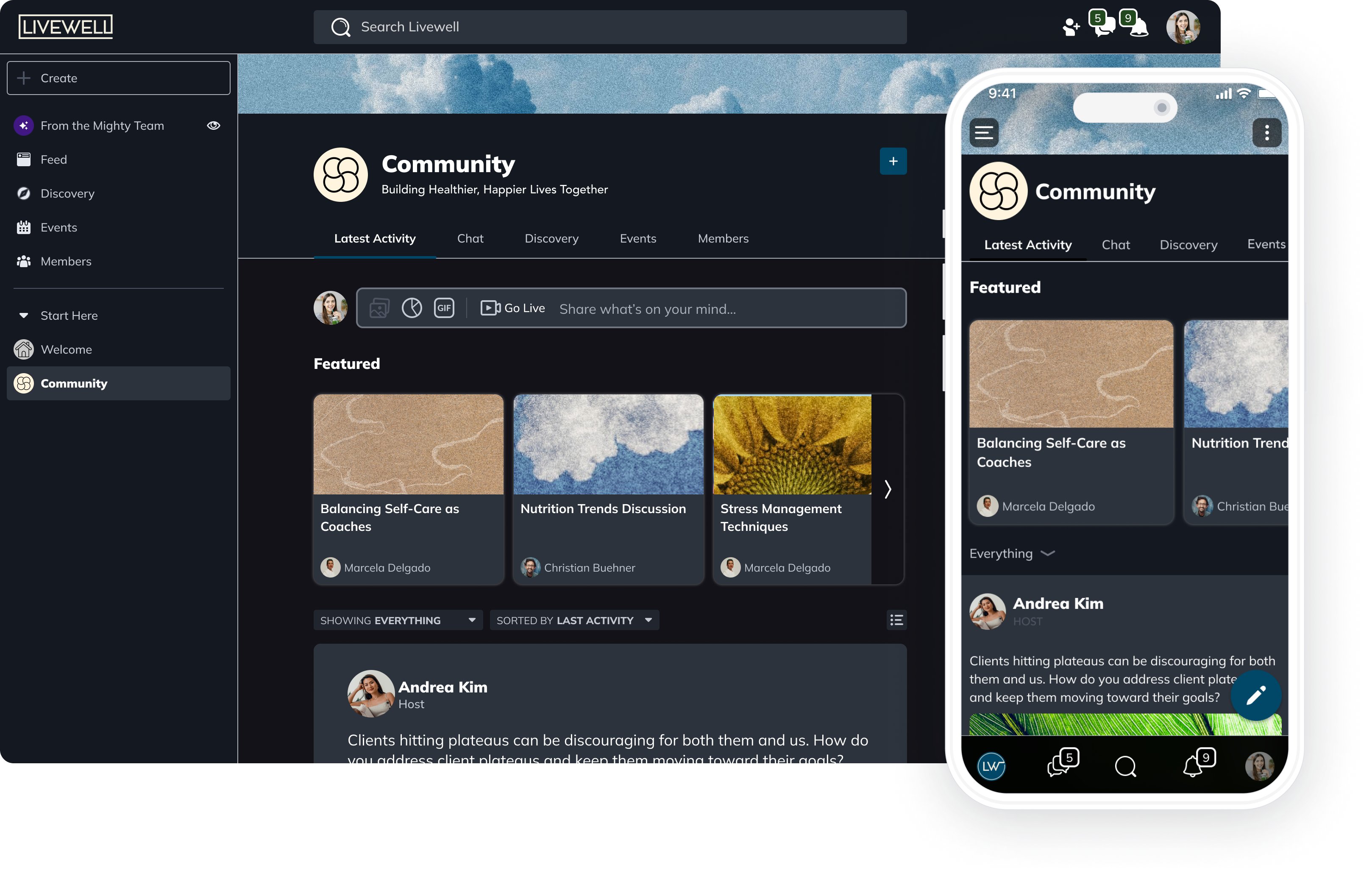
Don’t try to underprice your competitors
When you take a look around and see what others are charging, you can absolutely let that inform what you should charge. But don’t get in a race to the bottom.
People equate price with value. If people were always looking for the best bargain, Whole Foods would be out of business. Often in online courses, as in groceries, people are willing to pay more for quality.
Don’t race to the bottom on pricing.
Try value-based pricing
Here's a cool pricing strategy when you create an online course.
It’s common to think of pricing as a factor of what we put into something, usually measured by an hourly rate. “Oh, I only spent 5 hours making this… even if I charge $14 and get 20 customers, I’ve made $56/hr–which is pretty good.”
Don’t price like this.
Price based on the value to the audience. What is a transformation worth to them?
Here are some questions to ask:
How much time would it take them to learn this without your course?
How meaningful is the transformation to them?
What extra money will the skill you're teaching help them make?
If you can teach a business owner to make an extra $1,000 a month from now until forever, that course is probably worth a $1,000 price tag at least.
You can’t break down every course subject into absolute value. Things like oil painting or learning to play guitar are probably more for fun than anything.
But these have a psychological value too. If someone has always dreamed about playing guitar around a campfire, and they’ve never been able to do it, what would that be worth to them?
Figure it out as best you can and price accordingly.
Choose the right payment structure
Last but not least, figure out the right payment structure for your pricing. If you create a course on getting a job and charge $10/mo for access to a course and community, what if all your members start getting jobs after a month and leave?
This is where membership churn factors in, and your success might turn into a failure of your business model.
In courses where your members can take in value quickly, you probably don’t want to give monthly payments over a long period of time (unless people are locked in– but even then, who wants to pay for a full year for something that took 3 days to learn?).
In instances where your online course takes a while to complete, and you know people are going to stick around in your community to get results from it, it might be worth offering a payment plan to make it more affordable!
7. Market your online course
Stay in touch with your ideal members

One of the best reasons to interview as many potential students as you can possibly find is that some of these will become your first customers. That’s not to say they all will, and you shouldn’t expect them to. But once people talk to you about their challenges, see you as the right person to help them fix them, and they hear you’ve created a course exactly around those challenges, it shouldn’t be a huge surprise that some of those people might want to buy.
You can reach out to them as the course is launching with an email like this:
Hi Jen, Thanks again for your amazing insights in our interview–they were so helpful in creating my course: Watercolor Brush Techniques. If you’re interested, I’m launching it next week for $59, but here’s a coupon code for 50% off as a thank you for your time. And no pressure if it’s not the right time right now. Hope to see you there!
You don’t have to give a coupon code, but it’s a nice touch. So is offering people an out; after all, it’s nice if they buy your course but they aren’t obligated to.
Still, many creators find that their first students come from those ideal members they interviewed, which is great!
Use all your social channels
If you have any sort of social media presence, talk your course up on social! You could even use a scheduling tool (if you don’t already) to make sure that you’re consistently reaching any followers you have about the course you’re creating.
And you don’t need 50,000 followers to launch a successful course. Work with what you’ve got.
Try email
If you have an email list of any kind, it’s a great way to promote an online course. People on your email list are already looking forward to hearing from you on a regular basis, so promote your course to them!
One thing to remember. It’s very unlikely that all of them will buy. More likely, a fairly small percentage of them will. That’s okay and totally normal!
Don’t get your feelings hurt if you have 100 people on an email list and only 5 of them buy on your launch weekend. As far as email marketing goes, that’s a pretty good response!
*If you're building on Mighty Networks, you can use the ConvertKit integration to connect Mighty and ConvertKit together!

Host a webinar
Webinars are a tried and true way to market an online course. A great webinar sets you up as the expert, shows that you’re a great presenter, and gives people a taste of what it would be like to join a course with you.
A few things to keep in mind:
The webinar should be a taste of the course, it should give value but leave people wanting more.
Don’t make it a straight marketing pitch. Make sure people get some actionable advice in the webinar.
A webinar is just as much about establishing you as the expert as it is delivering material.
You can choose live or recorded webinars, there’s no wrong answer. HOWEVER, a lot of people run pre-recorded webinars, and it shows. If you can make it live, it’s a nice touch.
8. Figure out your winning edge
As we’ve said a lot, there are a lot of online courses out there. If you want to make sure people buy yours, it’s important to identify what you have that others don’t.
And if you choose to host on Mighty Networks, you can give some amazing value added to your members.
Things like:
“This course will be taught live with community breakout sessions after.”
“Come build meaningful relationships with fellow course members.”
“I answer questions in the discussion section live.”
“Office hours every Thursday.”
People love this stuff! And in a world full of hit it and quit it online course marketing, where people tell you to just throw your course up and forget it, the winning edge is bound to be the connections people can make in your course.
Online Course Checklist
Identify a clear topic
Understand your ideal member
Tap into your unique strengths and identity
Find your tech & platform
Figure out pricing
Develop a marketing strategy
GO!
Conclusion- Come build with us!
We hope this guide for how to build an online course has given you everything you need to get started.
And if you're ready to build, come build with Mighty! Mighty Networks is cultural software platform, that's unique for courses.
Mighty lets you mix of content, community, courses, and commerce in a way you can't do anywhere else. You get a powerful course platform built into G2's top-rated community software. With flexible Spaces that let you add livestreaming, live events, discussions, assessments, or chat to your courses, you've got total control over your teaching. And yup, you can teach live or pre-recorded courses, whatever fits your business best.
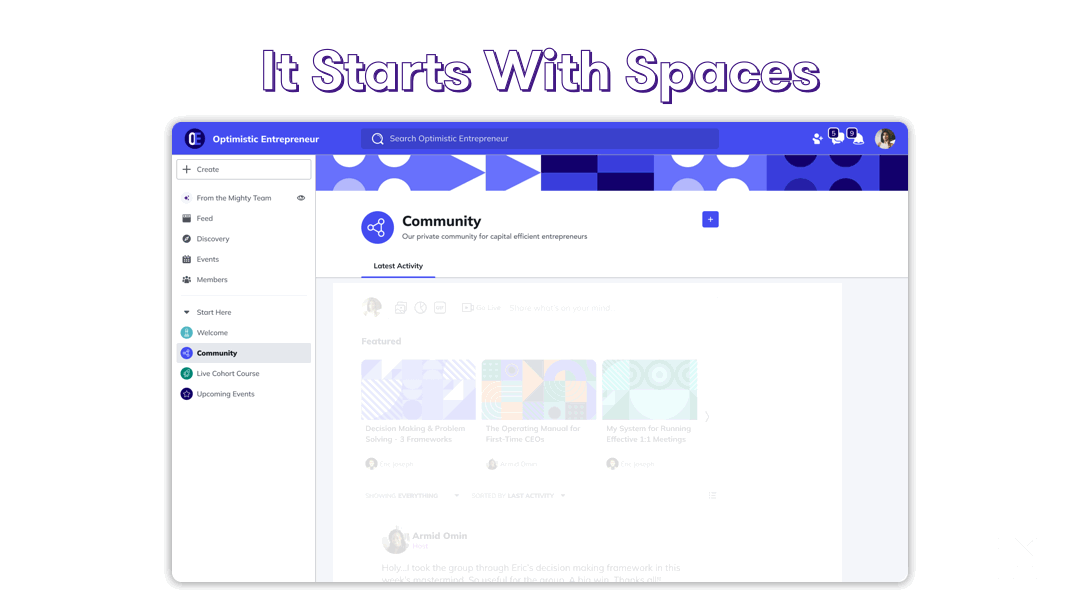
Mighty's AI tools mean you can instantly build course outlines, landing pages, and even a brand identity. Sell in 135 different currencies or even monetize with token-gating.
And, Mighty comes with beautiful native iOS and Android apps, or you can even get your course on a branded course app with Mighty Pro.
Try it free for 14 days - No credit card required.
Ready to start building your course and community?
Ready to start building your community?
Start a free 14-day trial to explore Mighty—no credit card required.
More like this
Join Mighty Community
Learn the principles of Community Design™ (and see them in action) alongside thousands of creators and entrepreneurs. It's free to join!

Online Courses
Creating a Course
Teaching a Course
Course Platforms
Selling a Course
Communities & Memberships
Community Platforms
Managing a Community
Building a Community
Growing a Community
Monetizing a Community
Content Creation
Creators & Entrepreneurs
Monetization
Content Creation
Starting a Business
Website Builders
Creating & Managing a Website
Events
Event Platforms
Hosting & Marketing Events
Branded Apps
Creating a Mobile App
Coaching Apps
Community Apps
Coaching
Mastermind Groups
Starting a Coaching Business
Coaching Platforms
Filter by Category
Online Courses
Communities & Memberships
Creators & Entrepreneurs
Events
Branded Apps
Coaching
Build a $1 Million Community
This free masterclass went viral—sign up to learn why.


